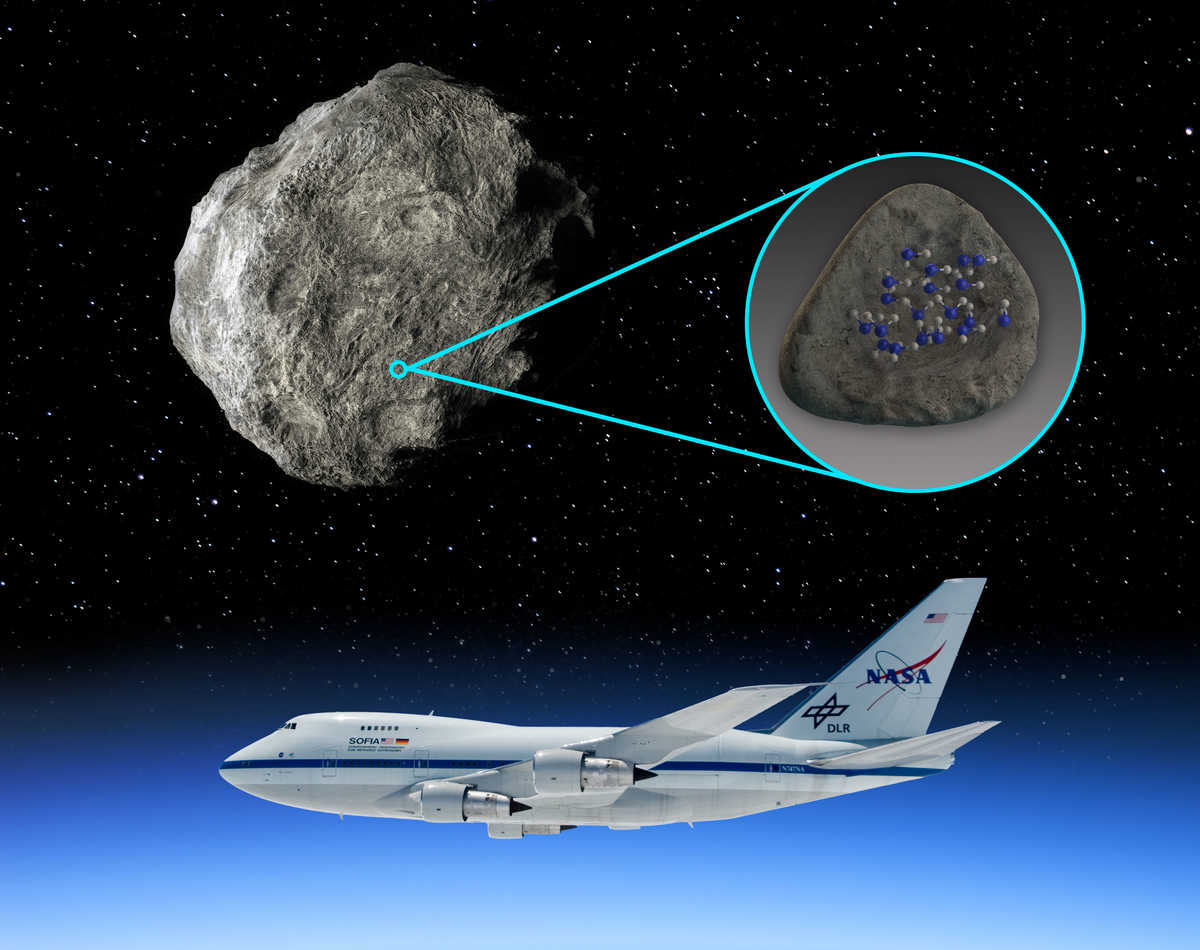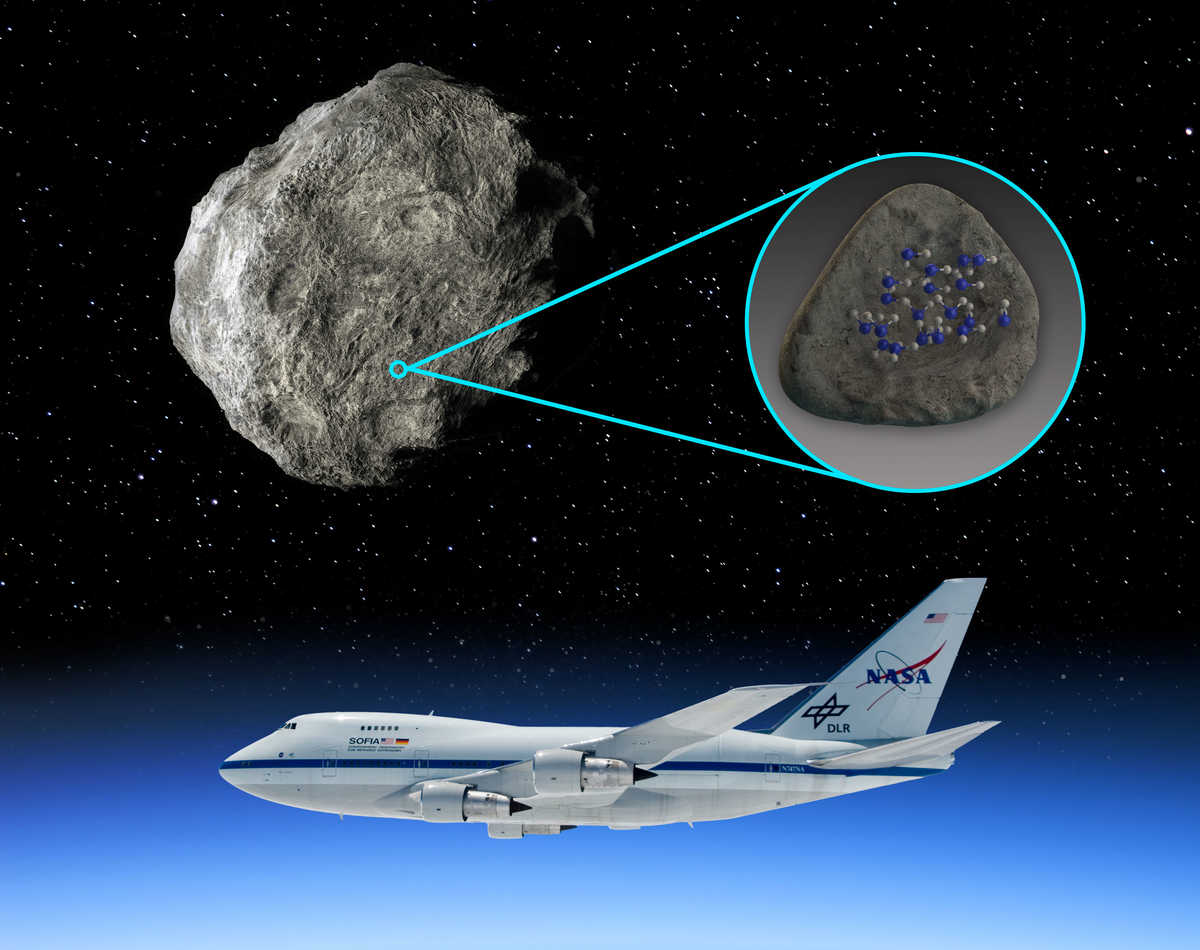Scientists identified the molecule on two main-belt asteroids, 7 Iris and 20 Massalia, using data from the now-defunct SOFIA airborne observatory.

NASA’s Stratospheric Observatory for Infrared Astronomy (SOFIA), shown here, took the observations that Southwest Research Institute scientists analyzed to discover water molecules on the surfaces of two asteroids. Credit: NASA/Carla Thomas/SwRI
Asteroids are notoriously difficult to study in detail from afar — hence the well-deserved celebration when material is brought back to Earth for analysis. But now, scientists have for the first time identified water molecules on two supposedly “dry” main-belt asteroids, 7 Iris and 20 Massalia, using data from a now-retired airborne telescope.
“We detected a feature that is unambiguously attributed to molecular water on the asteroids,” Anicia Arredondo, study lead author and asteroid researcher at the Southwest Research Institute, said in a press release. The paper was published in The Planetary Science Journal.
The asteroids in question are mostly made of silicates. Such silicate-rich asteroids are believed to lack water because they formed close to the Sun — too close for water ice to condense — hence why water is instead common on asteroids that formed farther from the Sun. The water molecules on Iris and Massalia are most likely dissolved on the silicate glass formed by impacts, trapped within silicates on the surface, or chemically bonded to other minerals on the asteroid.
Detecting water
Understanding how water is distributed across the asteroid population could help us unravel how the precious molecule got to Earth, Arredondo said in the release. Instruments like the now-retired Stratospheric Observatory for Infrared Astronomy (SOFIA) and its FORCAST instrument were key to the discovery, as they could pick up the unique signatures of water found at infrared wavelengths not accessible by telescopes on the ground.
SOFIA previously detected water in the Moon’s southern hemisphere. Using a similar method, the team looked at a total of four asteroids. The group also included 11 Parthenope and 18 Melpomene. They found three of the asteroids — Iris, Massalia, and Melpomene — showed absorption at a wavelength of 3 micrometers, which could either be attributed to water or to other molecules. But Iris and Massalia also showed absorption at 6 micrometers — a signature only attributable to water.
“Based on the band strength of the spectral features, the abundance of water on the asteroid [Iris and Massalia] is consistent with that of the sunlit Moon,” Arredondo said. The data from Parthenope and Melpomene were too faint to conclude whether they also contained water.
Using new tech
Bigger, better telescopes like the James Webb Space Telescope (JWST) might pinpoint other asteroids holding water. The team has already looked at two additional asteroids with JWST and has submitted a proposal to look at 30 other objects with JWST. With even more observations, they hope to better determine how water is distributed across the solar system.

